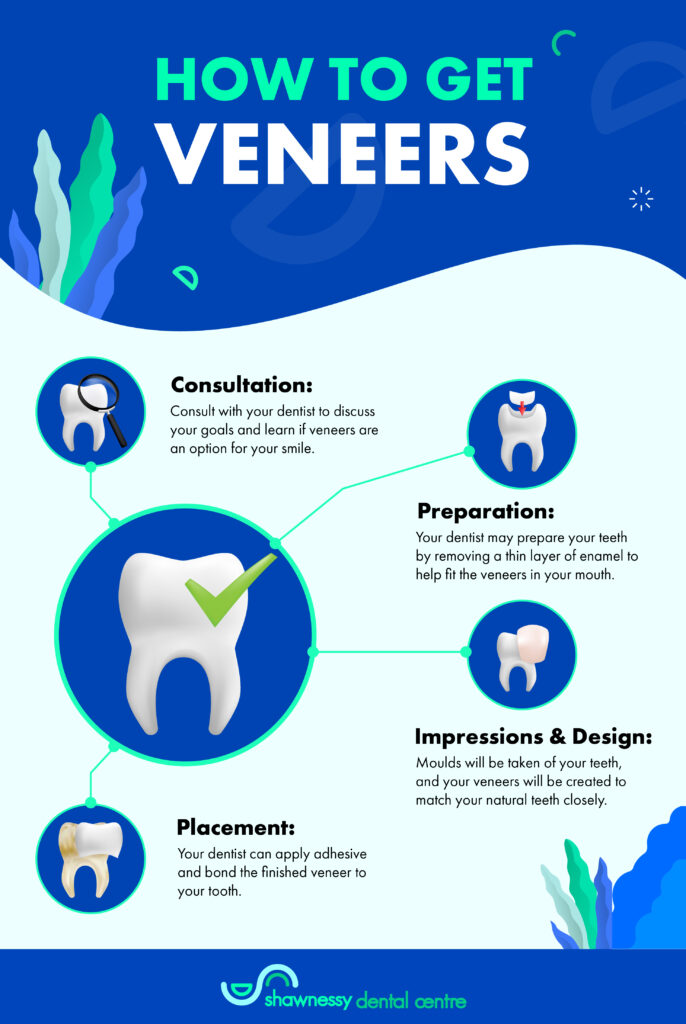Veneers are an excellent way to restore your smile and give your teeth a natural, healthy look. Since they’re a permanent addition to your smile, your teeth will undergo some changes to fit them.
Underneath your veneers, your natural teeth can look slightly smaller as your dentist may remove a small layer of enamel to help some veneers fit comfortably in your mouth.
What Are Veneers?
Veneers are thin shells made of either porcelain, ceramic, or composite resin and placed on the surface of your teeth with the help of a dental adhesive. They can cover a variety of tooth imperfections, including chips, gaps, stains, and minor misalignment issues. Unlike braces or other orthodontic treatments, veneers can provide a fast and long-lasting solution to smile repair.
They require multiple appointments to create and apply but can also last a long time and provide a more natural-looking smile.
What Happens to Your Natural Teeth?
Before your dentist places your veneers, they may prepare your teeth by grinding down the part of the tooth structure, removing a thin layer of enamel. This procedure is usually done under local anesthetic to help you feel more comfortable. The amount of enamel that needs to be removed depends on the type of veneer used and the correction needed.
Removing tooth structure is necessary to create space for the veneer without making the tooth look too bulky or unnatural. It’s important to note that the placement of veneers is an irreversible procedure. Once the tooth structure has been removed, it cannot be brought back.
The amount of tooth structure that must be removed depends on the type of veneer used and the correction needed.

How Are Veneers Applied to Teeth?
From consultation to placement, the process of getting veneers involves careful planning and precise execution by your dentist.
Consultation & Preparation
The first step in getting veneers is to schedule a consultation with your dentist. During this appointment, you can discuss your goals for your smile and your dentist can evaluate your oral health and determine if veneers suit you.
Impressions & Design
After your teeth are prepared, your dentist can take impressions (moulds) of your teeth and send them to a dental laboratory where your veneers will be created. You and your dentist can also choose the colour and shape of your veneers to match your smile’s natural appearance.
Placement of Veneers
Once your veneers are ready, your dentist can clean your teeth and use a grinding tool to make the tooth’s surface rougher, which helps the veneer bond to the tooth. Next, an adhesive, like dental cement, is applied to keep the veneers in place. They will then place the veneers on your teeth and cure the adhesive using ultraviolet light. After your veneers are in place, your dentist can adjust their shape to help make your smile look more natural and aligned.
Who Can Get Veneers?
A healthy mouth, teeth, and gums are critical components of a successful veneer procedure. Only some people are eligible for veneers, so here are some criteria your dentist may consider.
Teeth That Are Free of Decay
Before applying veneers, your dentist can address any tooth decay or cavities. If untreated, decay can weaken the tooth structure and make veneers unable to adhere correctly.
Healthy Gums
Healthy gums are essential for the success of your veneers. If your gums are swollen or infected, the procedure could damage them further. Your dentist can thoroughly examine your gums before the veneers are applied.
Thick Tooth Enamel
A thin layer of enamel is removed to prepare the tooth for veneers. If the tooth has thin enamel, the process may not be possible. Your dentist can evaluate the thickness of your enamel during the initial examination.
Mostly Intact Teeth
A crown may be recommended instead of a veneer if the tooth is significantly damaged or has a large filling. Veneers are ideal for minor cosmetic enhancements, while crowns provide more significant protection from damage.
No Grinding or Clenching
Bruxism, or chronic teeth grinding and clenching, is a common condition that can cause damage to veneers. If you have bruxism, your dentist may suggest alternative treatments or a nightguard to protect your teeth and veneers from damage.
Ask Your Dentist if Veneers Are Right for You
Getting veneers can completely transform the appearance of your teeth, leaving you with a healthy, natural-looking smile. With proper care, your veneers can last for many years.
If you are considering getting veneers, schedule an appointment to visit your dentist at Shawnessy Dental Centre to see if they are an option for your smile. Our experienced team can walk you through the veneer process from your first consultation through to your beautiful new smile.



